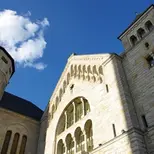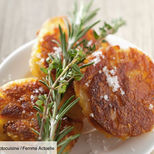


THURSDAY, June 15
Arrivals
For FCS Board Members
"Parkowa", City Park Residence
04:30pm-07:30pm FCS Board meeting
08:30pm Board Members & partner's dinner prepared by a chef
"Cucina 88", City Park Residence
For FCS Members and partners and YFCS
City Park Residence
08:00pm-11:00pm (optional) Drinks and Buffet dinner at “Restauracja Ulan Browar”, City Park Residence, Poznań
Polish beers and dinner of local specialties - previously a brewery.
FRIDAY, June 16
For FCS & YFCS Members
Zamek Cesarski- The Imperial Palace, Poznan
09:00am-11:00am 26th Friends of the Countryside General Assembly
-
Welcome
-
Introduction
-
Formalities- 26th FCS General Assembly
-
Approval of the minutes FCSGA 2022 in Evora
-
Approval of Candidate FCS Members
-
Election of FCS Board Members
-
Election of Candidate FCS President
-
-
ELO Achievements- Thierry de l'ESCAILLE, ELO President and FCS Secretary General
-
2023: September Study tour in France
-
June 2024- FCS 27th General Assembly- presentation
-
Accounts and budget
-
Young Friends of the Countryside
-
Varia
-
Q&A
11:00am-11:30am Networking break
11:30am-12:45pm Conference: "Adapting to New Times: Embracing Opportunities"
-
Grzegorz Brodziak, Chairman of the Board, Goodvalley Agro S.A.
-
Paweł Esse, President, Domus Polonorum - https://domuspolonorum.org/about-us/
-
Natalia Madajczyk, Head of Unit for interdisciplinary projects, Project Coordination and Urban Regeneration Office, Poznan City Hall
12:45pm-01:00pm Famigro Award ceremony
For Partners
09:00am Meet at the Imperial Palace for a guided tour
Followed by a guided visit in Poznan: Zamek Krolewski and National Museum with stop at "Weranda" for a coffee
For All
01:30pm-03:00pm Walking lunch in the courtyard of the Imperial Palace
Afternoon
03:00pm-05:00pm (optional)
Option 1: Beyond Poznan (30 min bus) Guided visit to Raczynski Palace, Rogalin: art collection and gardens
Option 2: In Poznan : Guided visit to The Cathedral Island and Brama Interpretation Center
03:00pm-05:00pm
Option 3: For Young Friends : Sustainable Transformation for Estates Workshop & Private Family Media Training - Zamek Cesarski- The Imperial Palace, Poznan
Part 1:
With Milan Petit, from the Sustainable Storyteller Academy Europe, co-hosted by Zeeger Scholten, YFCS.
Programme: Please answer the questions in this link to make the workshop relevant to you : https://forms.gle/NZH5vBaUuwNKmd8m9
Using the power of stories for the sustainable transformation of estates. During this session we will cover the following 3 questions:
-
Why transform one’s estate to a planet positive estate, and what does this mean?
-
How to use storytelling to make such a transformation a success?
-
How to support family, friends, and others who are transforming their estates, or are thinking about doing this?
Part 2:
With Michal Mlcousek from Time For Words for a workshop on "Private Family Media Training".
Gala dinner
08:00pm Gala dinner in town at Bazar 1838
Wildlife Estates label ceremony
"After dinner drinks" at the American Bar Some Place Else at the Sheraton hotel
Wielkolska Region
Wielkopolska is located in the central-western part of Poland and is a region with valuable monuments, castles, and palaces, and attractions of industrial tourism, valuable natural areas including two national parks. The Great Waterway Loop of Wielkopolska covers over 680 km of river, lakes and channels for water tourism.
The first capital city of Poland was Gniezno in 1000 (50km east of Poznan). The cathedral was the place of coronation of Polish kings and is the oldest in Poland. The mausoleum of Mieszko I and Boleslaw the Brave, Ostrów Lednicki, recognised as a historical monument, are important attractions of the Polish Route with 25 objects. It is the main route for cultural tourism in the region and the oldest of its kind in the country.
Poznań - a Short History
Poznań today is the 5th largest city in Poland with a population of over half a million and is the capital of the Wielkopolska region, west-central Poland. It is now known for its beautiful Old Town with a variety of architectural styles, including Gothic, Renaissance, and Baroque and its international Trade Fairs. The most valuable monuments of Poznań include the Old Town, Church of Our Lady, Hotel Bazar and the Zamek.
Its origins date back to the 10th century, when a fortress was built on an island in the Warta River. According to linguists, the name Poznan is derived from the Old Polish male name Poznan or Poznamir. However, legend says that very, very long ago, in the place where the Cybina river flows into the Warta River, three brothers met after a long separation: Lech, Czech, and Rus. Although time separated them, they met immediately and at the same time joyfully exclaimed, "I recognize! I recognize..." To commemorate the event, they decided to build a city on the Warta River in the place of the meeting, which they called Poznan. It grew to become an important centre of trade and craft thanks to its position between Russia and Western Europe. The city earned its nickname “the Birthplace of the Polish state” as the Archbasilica of St. Paul and St. Peter functioned as the Cathedral in which Prince Mieszko, the first ruler of Poland, was baptised and buried.
Poznań fell to Prussian rule from the late 18th century when it thrived and had massive fortifications built. A dynamic building development began at the beginning of the 20th century which includes the Imperial Palace (Zamek) under the German ruler Emperor William II.
Poland gained its independence after World War I leading to increased investments in education in the city and the National Exhibition in 1929. World War Two however destroyed more than half the city and 90% of the Old Market Square during the Battle of Poznań. There was a determined action of restoration and modernisation from 1945.
The fight for independence from Communist Soviet Union with the Solidarnosc movement eventually led to the fall of Communism in 1989 and the introduction of the free market economy and an investment boom in the city which continues today.
Today one of the tourist attractions of Poznan are the Poznan butting goats. Every day at 12 o'clock, the goats booze on the tower of the Poznan City Hall. According to the legend, the city council ordered the clockmaker Bartlomiej from Gubin for a town hall clock. During the presentation, which was attended by the Poznan Voivode himself, a lavish feast was to be served. Unfortunately, one of the cooks burned a deliciously prepared leg of venison. Wanting to repair his negligence, he stole two goats grazing on it from the field to roast them on a spit. He brought them to the kitchen, but they escaped to the town hall tower. Surprised guests noticed on the cornice, above the new clock, two billy goats butting each other. The voivode forgave the cook for his wicked deed and ordered master Bartlomiej to build a mechanism with goats for the clock.
There is a tradition in Poznan to bake St. Martin croissants which dates back to 1891. On St. Martin's Day (November 11), the then pastor of the parish of St. Martin, appealed to the faithful to do something for the poor, following the example of their patron saint. One of Poznan's confectioners, Józef Melzer, baked three sheets of croissants and brought them to the church. The tradition of baking St. Martin croissants on November 11 has survived in Poznan to this day and inhabitants eat several hundred tons of this delicacy stuffed with white poppy seeds.
The oldest part of Poznan is Ostrow Tumski. In the past, it was one of the centres of power of the Polish state. On the island, archaeologists discovered the remains of a ducal palatium from the 10th century and the Dabrowka chapel. The "Genius Loci" Archaeological Reserve was opened there, where you can see the world's only preserved fragment of the defensive rampart from the 10th century (the rampart of Mieszko I's stronghold).
Poznan has many monuments: the Old Market Square with the Town Hall from which the bugle call of Poznan's goats resounds. Other interesting buildings on the market square are construction houses, city scales, a guardhouse, and a baroque parish church with an adjoining Jesuit college. On the hill above the Old Market Square there is the Royal Castle with fragments of defensive walls.
The legendary "Bamberka", one of the symbols of Poznan, commemorates the Bambers who came to Wielkopolska years ago from Germany. Originally, the figure of Bamberka stood over the basin of the well, which was to serve as a watering trough for horses. It was put up by a certain Leopold Goldenring, the owner of a winery in the Old Market Square, who tried to draw attention to his premises in this way.




















